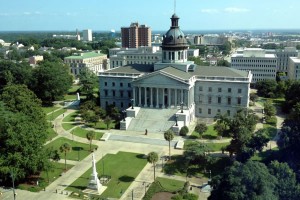
Too tight; Jackets, sleeves too short.
By Andy Brack, editor and publisher | Count me as a guy who doesn’t get what’s going on with men’s clothes these days.
 Jackets, shirts, pants – too many that are too small and too tight. Whether it’s the guy in front of me at church, the hipster at a civic club meeting or the hero out and about at the grocery store, I don’t need to see that much of any guy.
Jackets, shirts, pants – too many that are too small and too tight. Whether it’s the guy in front of me at church, the hipster at a civic club meeting or the hero out and about at the grocery store, I don’t need to see that much of any guy.
Clothes need to fit, not be plastered onto a body. And plaid needs to be reserved for a special place in hell.
Of course, you may not be surprised about this prejudice against the clothing squeeze if you’ve ever seen me. The Brack wardrobe doesn’t include much that’s outside of the clothing featured in 1980 in The Official Preppy Handbook.
While I generally forsake suits these days, the standard business attire now is either the Charleston winter uniform (gray pants, white shirt, blue blazer, striped tie) or the Charleston summer uniform (khaki pants, white shirt, blue blazer, striped tie). On the feet: Penny loafers, no socks. If the occasion calls for a little more serious footwear, look for black lawyer shoes. If it is cold, socks.
One note for summer attire, since it is now past Memorial Day: Seersucker occasionally makes an appearance, but more in the form of short pants than in two-piece suits. Non-business attire tends to be jeans or khakis with a solid polo shirt. Around the house, the polo might be replaced by an old soft T shirt (political or something picked up from travels). On the feet: Loafers even older than the one that goes to business meetings.
Bottom line: It’s not hard to dress a male Brack by sticking to the tried and true business and off-duty uniforms of the past.
And it’s pretty easy to avoid all of these constraining, tight shirts, skinny-legged pants and jackets that look like they’ve been in the dryer’s shrink cycle.
Here’s hoping you have a little space in your clothes.
And now for something more serious
Now if you want to read something with a big more gravity, here’s an excerpt from our recent Statehouse Report column on how the new federalism from Washington could impact – and hurt – South Carolina:
 “ If you think Washington is a mess these days, consider what could happen in South Carolina if Washington leaders pushed some of their turmoil onto the General Assembly. Can you imagine a scenario in which the mess would be better if Columbia got involved?
“ If you think Washington is a mess these days, consider what could happen in South Carolina if Washington leaders pushed some of their turmoil onto the General Assembly. Can you imagine a scenario in which the mess would be better if Columbia got involved?
For years, conservatives have been pushing a new federalism – a shift of authority from the “big” national government to states. President Donald Trump’s newly-proposed $4 trillion budget is an exercise in new federalism. It calls for drastic cuts in federal programs and shifts of responsibility to states.
Listen to state Sen. Tom Davis, R-Beaufort, an acolyte who says the new federalism should have bipartisan appeal: “People on the ground in their own communities know far better than D.C. bureaucrats and politicians how they want to live and what they want from government. And their ability to hold local officials accountable for decisions made with their money is far greater than any degree of control they could ever hope to have with federal officials.”
Sound good? Now think more deeply and consider how it would work, particularly in tax-averse South Carolina. Several Statehouse observers fear the state legislature simply isn’t ready to take on more responsibility to deliver programs, especially if the national government hands them problems without money to go with it.
“It poses a very serious challenge for the states because they currently lack the human capital, expertise and infrastructure necessary to do this work,” notes Steve Skardon, the executive director of the state’s Palmetto Project who used to work in Washington for House Speaker Tip O’Neill.
- Read the full commentary
- Read the recent Statehouse Report news story on how Medicaid cuts could hurt the Palmetto State.



 We Can Do Better, South Carolina!
We Can Do Better, South Carolina!

























Pingback: FEEDBACK: Do we think Columbia can do better than D.C.? — Charleston Currents